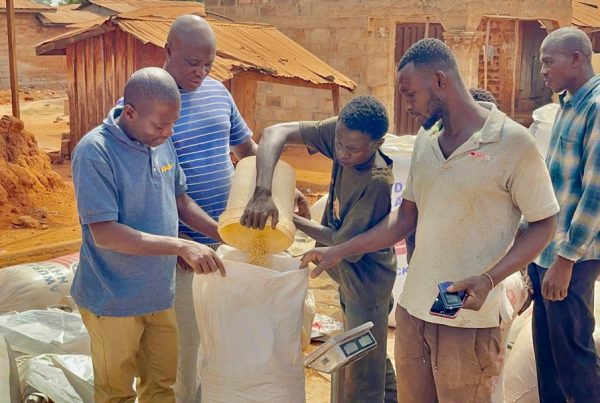A blog by Emmanuel Soita, Esoko Content Specialist (Kenya)

Recently I got a chance to go out in the field and interact with farmers in parts of Trans-Nzoia County (one of the 47 counties of Kenya). What I learnt during my visit made me stop and ask myself some key questions; questions which everyone who ‘claims’ to be an advisor of farmers on Good Agricultural Practices (GAPs) should ask themselves:
1. How precise is the information we give to the farmer, really?
It is the joy of every farmer to get better yield at the end of the growing period. Quite often, though, farmers end up with meagre yields and still have to make a hard decision between how much they set aside for their families’ consumption and how much to sell (to help them settle other basic needs). It is for this reason that government extension officers, NGOs and private organizations like Esoko exist; to help farmers produce more by applying GAPs (Good Agricultural Practices)…but , how good, really, are these “Good Agricultural Practices?”. This is a question every content provider of agricultural information should ask themselves.
Understanding your country’s Agro-ecological Zones (AEZs)
Different countries have different AEZs. For instance, according to FAO, there are 6 AEZs in Ghana. On the other hand, Kenya has a total of 7 AEZs. But then again, even if the two countries had the same number of AEZs, their characteristics would still be widely varied. The differences are usually brought about by:
- The varying soil characteristics i.e. soil types, soil nutrient level, soil pH, soil texture, soil colour etc.
- Different rain seasons in terms of when the rains start/ end or date range in a given month of the year,
- Altitude – this is height above the sea level and it can be low, medium or high.
- Temperature – this is normally determined by how far an area is from the equator. The further a place is, the cooler. That is why an equatorial country like Kenya or Democratic Republic of Congo (DRC) is much warmer as compared to a polar country.
It is these factors that dictate what crop species and varieties should be grown; when they should be grown; what type and quantity of fertilizer to be applied; and what method of land preparation should be employed among many other farming decisions.
As much as we have these Agro-Ecological Zones defined by the different researchers who have gathered and published information on the subject, it is really important that you, as a provider of GAPs gain a better understanding of each of your country’s AEZ. For instance, on my field visit, I learnt that even when an area lies within the same AEZ, there are differences that still exist. Trans-Nzoia County is classified under Zone II (a high potential zone) of the 7 Kenyan AEZs. However, I was shocked to find out that soil conditions at Saboti are different from those at Gituamba, yet the two places are located in the same county and barely 5km apart. Thus, giving blanket fertilizer recommendations to farmers in these two places would be very misleading. How about weather? When I left Gituamba for Saboti (on a motorbike), the sun was really shining. There was no sign of rain at all. Shockingly, I arrived at Saboti soaked in rain water. Again, how helpful would blanket weather information be?
2. What kind of information would the farmer find useful?
With mobile penetration rapidly growing in Africa, agricultural experts are moving away from the traditional face-to-face verbal interaction with farmers to use of the short messaging service (SMS). Farmers can subscribe to receive agricultural tips at a small fee of between Ksh.3 to Ksh. 5 per SMS. WhatsApp, a smartphone app, is also gaining ground but gradually. This is attributed to the fact that very few farmers own smartphones and even then, you find them constantly asking for help from the younger members of their families / community. This leaves SMS as the best channel of communication for delivering agricultural tips to the farmer. To improve on this service, companies like Esoko have a call centre which farmers can access for more information on the sent agric tips. Apart from calling for additional information or clarification on received agric tips, farmers also call Esoko to ask questions around farming, with majority of the traffic being around varietal selection, pest & disease management and agricultural market price information.
Focusing on agricultural/ farming tips; how should a good agric tip look like? Before you think of answering that, let’s look at the two tips below:
In a nutshell, a good agric tip should be the one that provokes action. At the same time, it is important to ensure that you use the simplest terms possible just so you ensure farmers benefit the most from the information you are sending them.



